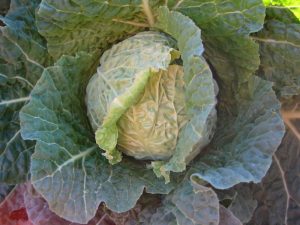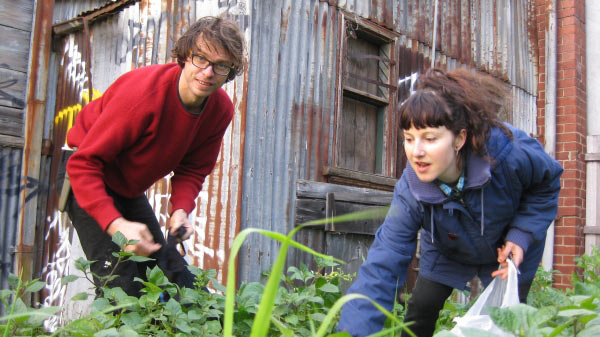 Brassica oleraceae (capitata group)
Brassica oleraceae (capitata group)
Family: Brassicaceae
Cabbage is a very versatile vegetable and can be pickled, eaten raw or cooked, used in stir-fries and even added to a health-giving green smoothies. Sure, soggy overcooked cabbage and fast food coleslaw aren’t the greatest, but don’t let childhood food traumas prevent you from appreciating the potential of this fine plant. With it’s slight mustardy and sulphurous flavours, sliced finely it makes for a fine salad ingredient, or contribution to an excellent stew. The brassicas are renowned for their antioxidants and anti-cancer properties.
History
The cabbage has been cultivated for about two thousand years throughout the East and the West of the Northern Hemisphere. Cabbage was mentioned in early literature before broccoli, cauliflower, brussel sprouts and kohl rabi – all members of the same species of plant. Humans have simply over many generations saved the seed of the plants with attributes thy liked best, and in the case of cabbage, it is the head of juicy leaves that was the focus of selection criteria. Ancient farmers’ careful selection and breeding techniques over millennia created this impressively diverse spectrum of vegetable excellence. The cabbage was developed after the kale plant but well before cauliflower, broccoli and brussel sprouts. The Romans however believed cabbage grew in the place Jupiter’s sweat fell to the ground. Throughout northern Europe, the plant was prized for its ability to withstand frosts and snows. Salted and fermented cabbage, called sauerkraut, was the vitamin C preserving technology which allowed Captain James Cook to overcome scurvy on long voyages and in turn ‘discover’ Australia. We love sauerkraut — it’s incredibly easy to make, is the best way altogether of eating cabbage and is an excellent probiotic too, long before expensive probiotic orange juices came on the market.
Varieties
There are many exciting varieties of cabbage that come in three main colours – green, red and purple. Some good local choices are:-
- Red Dutch – which has been grown in Australia for over 100 years.
- Sugarloaf – mentioned in literature as far back as 1655, so it’s gotta be good.
- Wong Bok – is a Chinese cabbage with a milder flavour than the above and has lovely crumpled leaves.
Health and Nutrition
Cabbage is an excellent source of Vitamin C, is a great antioxidant and is a recommended dietary component to assist in the prevention of cancer (along with the other members of the Brassica family including broccoli and cauliflower). Eating cabbage helps the body remove toxic chemicals. It has also been used as an anti-inflammatory.
Cultivation
Cabbages can be broadcast (if you have enough seed to spare) like radish or any of the other greens and then thinned to give you good tender young leaves for your salads while leaving the strongest and most vigorous to grow and give you the best genetics in your next crop and seed collection round.
When to sow
To get a cabbage for spring eating plant in autumn and eat from a loose-ish crop. Most cabbages will be sown in spring and take varying times to mature and leave the home gardener with an early (summer), middle (autumn) and late (winter) harvest. The correct cultivars must be chosen for the planting times.
Spacing
10cm and then thin to 30-50 cm apart (use thinnings in the kitchen). The outer leaves need good sunlight in order to capture the energy needed to grow the dense head.
Soil depth
Plant seed fairly deep, around 5cm
Time to harvest
20-30 weeks for ‘Winter’ European varieties. Around 10 weeks for Chinese varieties like wombok, which are actually another brassica species.
Requirements
Likes a good dressing of manures or similar nitrogen supply and a well drained soil but remember to keep well watered as all those leaves get thirsty. Needs a fairly good dose of sunshine.
Pests and Diseases
Pests include cabbage white butterfly (aka cabbage moth), whitefly, aphids, and diseases include clubroot. Due to the latter, it’s important to rotate your brassicas and not grow them in the same bed year after year.




